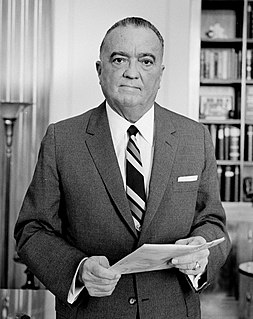
John Edgar Hoover was an American law enforcement administrator who served as the first Director of the Federal Bureau of Investigation (FBI) of the United States. He was appointed director of the Bureau of Investigation – the FBI's predecessor – in 1924 and was instrumental in founding the FBI in 1935, where he remained director for another 37 years until his death in 1972 at the age of 77. Hoover has been credited with building the FBI into a larger crime-fighting agency than it was at its inception and with instituting a number of modernizations to police technology, such as a centralized fingerprint file and forensic laboratories. Hoover is also credited with establishing and expanding a national blacklist, referred to as the FBI Index or Index List, renamed in 2001 as the Terrorist Screening Database which the FBI still compiles and manages.

Pacific Beach is a neighborhood in San Diego, bounded by La Jolla to the north, Mission Beach and Mission Bay to the south, Interstate 5 to the east and the Pacific Ocean to the west. While formerly largely populated by young people, surfers, and college students, because of rising property and rental costs the population is gradually becoming older and more affluent. "P.B.," as it is known as by local residents, is home to one of San Diego's more developed nightlife scenes, with a great variety of bars, eateries, and clothing stores located along Garnet Avenue and Mission Boulevard.
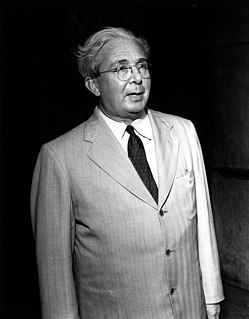
Leo Szilard was a Hungarian-American physicist and inventor. He conceived the nuclear chain reaction in 1933, patented the idea of a nuclear fission reactor in 1934, and in late 1939 wrote the letter for Albert Einstein's signature that resulted in the Manhattan Project that built the atomic bomb. According to György Marx he was one of the Hungarian scientists known as The Martians.
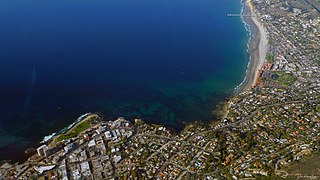
La Jolla is a hilly, seaside community within the city of San Diego, California, occupying 7 miles (11 km) of curving coastline along the Pacific Ocean within the northern city limits. The population reported in the 2010 census was 46,781.

Hotel del Coronado, also known as The Del and Hotel Del, is a historic beachfront hotel in the city of Coronado, just across the San Diego Bay from San Diego, California. It is one of the few surviving examples of an American architectural genre: the wooden Victorian beach resort. It is the second largest wooden structure in the United States and was designated a California Historical Landmark in 1970 and a National Historic Landmark in 1977.

The Beverly Hills Hotel, also called the Beverly Hills Hotel and Bungalows, is located on Sunset Boulevard in Beverly Hills, California. One of the world's best-known hotels, it is closely associated with Hollywood film stars, rock stars, and celebrities. The hotel has 210 guest rooms and suites and 23 bungalows, each designed in the signature pink and green colors that are a trademark of the hotel.
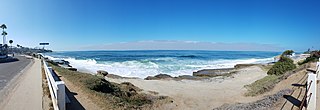
Windansea Beach is a stretch of coastline located in La Jolla, a community of San Diego, California. The neighborhood adjacent to the beach is named Windansea after the beach. It is named after the 1909 oceanfront Strand Hotel that was renamed "Windansea" Hotel in 1919 after the owner Arthur Snell ran a "naming contest". The Windansea Hotel which was located on Neptune Avenue between Playa del Sur and Playa del Norte burned down in 1943. Geographically, it is defined by the beachfront extending north of Palomar Avenue and south of Westbourne Street.

Ellen Browning Scripps was an American journalist and philanthropist who was the founding donor of several major institutions in Southern California. She and her half-brother E. W. Scripps created America's largest chain of newspapers, linking Midwestern industrial cities with booming towns in the West. By the 1920s, Ellen Browning Scripps was worth an estimated $30 million, most of which she gave away.

Birch Aquarium at Scripps is an aquarium and the public outreach center for Scripps Institution of Oceanography at the University of California, San Diego. Accredited by the Association of Zoos and Aquariums, Birch Aquarium at Scripps has an annual attendance of more than 439,000, including more than 40,000 school children, and features more than 3,000 animals representing 380 species. The hilltop site provides views of the Scripps Institution of Oceanography campus and the Pacific Ocean. The mission of the aquarium reads: "At Birch Aquarium at Scripps, we connect understanding to protecting our ocean planet".

The Lafayette Hotel, Swim Club & Bungalows is a hotel in San Diego, California, United States that opened July 1, 1946. It was listed on the National Register of Historic Places on July 31, 2012.

The Shamrock was a hotel constructed between 1946 and 1949 by wildcatter Glenn McCarthy southwest of downtown Houston, Texas next to the Texas Medical Center. It was the largest hotel built in the United States during the 1940s. The grand opening of the Shamrock is still cited as one of the biggest social events ever held in Houston. Sold to Hilton Hotels in 1955 and operated for over three decades as the Shamrock Hilton, the facility endured financial struggles throughout its history. In 1985, Hilton Hotels donated the building to the Texas Medical Center and the structure was demolished on June 1, 1987.
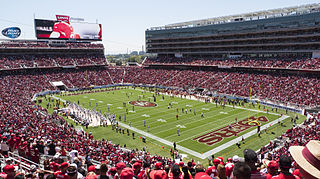
California currently has 18 major professional sports franchises, far more than any other US state. The San Francisco Bay Area has six major league teams spread amongst three cities: San Francisco, Oakland and San Jose. The Greater Los Angeles Area has ten major league teams. San Diego and Sacramento each have one major league team.
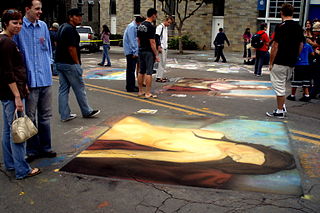
The culture of San Diego, California is influenced heavily by American and Mexican cultures due to its position as a border town, its large Hispanic population, and its history as part of Spanish America and Mexico. San Diego's longtime association with the U.S. military also contributes to its culture. Present-day culture includes many historical and tourist attractions, a thriving musical and theatrical scene, numerous notable special events, a varied cuisine, and a reputation as one of America's premier centers of craft brewing.
Clinton Williams "Clint" Murchison Sr. was a noted Texas-based oil magnate and political operative. Among his companies was the Southern Union Company. He was also the father of Dallas Cowboys owner Clint Murchison Jr.
Thomas Schoos is a German-American interior designer. Born and raised in Neuerburg, Germany, Schoos currently resides in West Hollywood, California, near his design firm, Schoos Design. The Schoos Design brand was founded in 1996.
The La Jolla Historical Society is a private 501(c)(3) nonprofit organization in the La Jolla community within San Diego, California that is committed to the discovery, collection and preservation of La Jolla’s heritage through collections, programs and advocacy.

Douglas Frederick Manchester is an American businessman and philanthropist. He is the former chairman of Manchester Financial Group, past chairman and publisher of The San Diego Union-Tribune, and an unsuccessful nominee to become United States Ambassador to the Bahamas. Manchester, who prefers to be called "Papa Doug", has built some of the tallest hotels and office buildings in San Diego, including the San Diego Marriott Marquis & Marina and the Manchester Grand Hyatt, and is credited as a driving force behind the development of the San Diego Convention Center. Manchester also built the triple 5-star Grand Del Mar Resort & Spa, which was sold to Fairmont Hotels & Resorts in 2015, and he maintains a minority ownership. Manchester also built the Torrey Executive Centre, Manchester Financial Building, Whitetail Lodge and Golf Club, Fairmont Austin and is currently building the Manchester Pacific Gateway.

The 1999 NCAA Men's Water Polo Championship was the 31st annual NCAA Men's Water Polo Championship to determine the national champion of NCAA men's collegiate water polo. Tournament matches were played at Canyonview Pool in La Jolla, San Diego, California during December 1999.
Maria Helen Alvarez was the first female CEO in television and was one of the original financial backers of the Disneyland Hotel in California. She was a millionaire by the age of 29 as a result of her hard work and ambition. She also became a pioneer in the TV industry.















